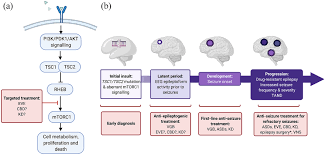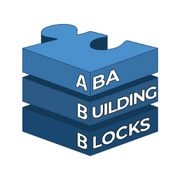Liquid Vigabatrin: A Practical and Powerful Treatment for Pediatric Epilepsy

Strong 8k brings an ultra-HD IPTV experience to your living room and your pocket.
Epilepsy affects people of all ages, but when it strikes infants or young children, the impact can be particularly severe. In these vulnerable populations, seizures can disrupt critical developmental milestones and lead to lifelong cognitive challenges. Fortunately, specialized treatments like liquid vigabatrin are helping bridge the gap where standard medications fall short.
In this article, we’ll explore what liquid vigabatrin is, how it works, its clinical uses, benefits, dosing considerations, and safety precautions. Whether you're a parent, caregiver, or healthcare provider, understanding this formulation can help you make informed decisions about epilepsy treatment options.
What Is Liquid Vigabatrin?
Vigabatrin is an antiepileptic drug (AED) used to treat specific types of seizure disorders. The liquid formulation refers to an oral solution or suspension, designed to be easily swallowed by infants and children who cannot take tablets or capsules.
This form of vigabatrin is especially helpful in pediatric cases where precision in dosing is essential. Unlike pills, liquid medications can be finely measured based on a child’s body weight, ensuring optimal results with minimal risk. The liquid format also allows for easier administration in patients with feeding issues, swallowing difficulties, or neurological impairments.
The availability of liquid vigabatrin has significantly improved the treatment of early-onset epilepsy syndromes, making this life-saving drug more accessible to those who need it most.
How Does Liquid Vigabatrin Work?
Seizures result from abnormal electrical activity in the brain. The balance between excitatory and inhibitory neurotransmitters is often disrupted in people with epilepsy. Vigabatrin helps restore this balance by targeting a specific enzyme known as GABA transaminase. This enzyme breaks down gamma-aminobutyric acid (GABA), the brain’s primary inhibitory neurotransmitter.
By inhibiting GABA transaminase, vigabatrin increases GABA levels in the brain. Higher levels of GABA help calm overactive neurons, reducing the likelihood and severity of seizures.
Because of this unique mechanism, vigabatrin is especially effective in cases where other antiepileptic drugs (which often work by different pathways) have not delivered adequate results.
Who Needs Liquid Vigabatrin?
Liquid vigabatrin is typically prescribed for patients with specific, difficult-to-treat forms of epilepsy. The two most common clinical indications include:
1. Infantile Spasms (IS)
Infantile spasms, also known as West Syndrome, are a rare but serious type of epilepsy that typically appears in babies under one year of age. They involve sudden, jerking movements and can occur in clusters. If left untreated, these spasms can severely impact a child’s neurological development. Liquid vigabatrin is considered a first-line treatment in many cases and is often initiated quickly after diagnosis to reduce long-term complications.
2. Refractory Complex Partial Seizures
For patients two years or older who suffer from complex partial seizures that have not responded to at least two other antiepileptic drugs, vigabatrin is sometimes added to their treatment regimen. In such cases, the liquid form offers ease of use and allows for personalized dosing, particularly in children or adults who have trouble swallowing.
Benefits of Liquid Vigabatrin
Pediatric-Friendly Format
The liquid form is specifically designed for children, allowing for precise dose adjustments. It's also easier for parents or caregivers to administer, whether through a syringe or mixed with a small amount of soft food.
Precision Dosing
Unlike tablets, which come in fixed doses, liquid vigabatrin allows healthcare providers to prescribe exact quantities based on weight and medical need. This flexibility is crucial in pediatric neurology.
Fast and Targeted Action
Many caregivers report rapid improvements in seizure control, especially in cases of infantile spasms. This quick response is vital to minimizing the developmental impacts of ongoing seizures.
Improved Compliance
Children often refuse or struggle to take pills, but a sweetened or flavored liquid solution is generally much easier to administer. This increased ease helps ensure consistent dosing and better outcomes.
You can learn more about this treatment option here: liquid vigabatrin
Dosage and Administration
Liquid vigabatrin is typically administered twice daily. The exact dosage depends on the patient's age, weight, and medical condition. Doctors usually start with a lower dose and gradually increase it, carefully observing how the patient responds.
Caregivers should use the measuring syringe or dosing tool provided by the pharmacist to ensure accuracy. Household spoons should never be used, as they vary in size and could result in incorrect dosing.
The medication should be shaken well before use to ensure an even distribution of the active ingredient. It should also be stored according to the manufacturer’s guidelines, usually in a cool, dry place or a refrigerator depending on the formulation.
Side Effects and Safety Considerations
While liquid vigabatrin is effective, it does come with some potential side effects. Common ones include:
Drowsiness or sleepiness
Irritability
Weight gain
Coordination issues
Mood swings or behavioral changes
However, the most serious and well-documented risk associated with vigabatrin is peripheral vision loss. This condition may occur gradually and is often irreversible. Because children may not notice or communicate these changes, regular eye exams are required for anyone taking vigabatrin for more than a few months.
To manage this risk, doctors weigh the potential benefits of seizure control against the risk of vision damage. In life-threatening or developmentally dangerous seizure conditions, the benefits often outweigh the risks.
Caregivers should watch for signs of visual problems, such as the child bumping into objects, losing interest in visual stimuli, or changes in depth perception.
Monitoring and Long-Term Care
Patients taking liquid vigabatrin must be closely monitored by a healthcare provider. This typically includes:
A baseline eye exam before starting the medication
Follow-up vision checks at regular intervals
Periodic assessments of seizure frequency and behavioral changes
Adjustments in dosage based on response and side effects
Additionally, a seizure diary can be a helpful tool for caregivers. Tracking frequency, duration, and triggers allows the neurologist to adjust treatment more accurately and effectively.
Final Thoughts
For many families dealing with pediatric epilepsy or drug-resistant seizure disorders, the treatment journey can be long and emotional. But innovations like liquid vigabatrin provide a critical lifeline. With its precise dosing, easy administration, and strong efficacy in complex seizure types, this medication has become a trusted choice among pediatric neurologists and epileptologists worldwide.
While it requires careful monitoring due to potential vision risks, for many patients, the benefit of improved seizure control and developmental progress is life-changing. When used under expert supervision, liquid vigabatrin can significantly improve both short-term outcomes and long-term quality of life.
Note: IndiBlogHub features both user-submitted and editorial content. We do not verify third-party contributions. Read our Disclaimer and Privacy Policyfor details.





